From script to final art for a STEM book
The development process of a historical Non-fiction Picture Book
"Bonnie's Rocket" was the first STEM book I worked on. As a child, I was always interested in astronomy and theoretical physics. It may seem unusual for a little kid to like physics, but like Bonnie's grandfather, my dad was also an engineer. He helped develop sonar technology when he was young. However, he could not continue his engineering career after we moved to Hong Kong. Instead, he would read biographies of scientists and science books as bedtime stories to me.
While in graduate school at UCLA, I sat in physics classes and read theoretical physics books for fun. I totally got nerd out when I first read the manuscript for Bonnie's Rocket. My immediate thought is AH HA! Let's see how much nerdy science I can squeeze into the book!!
I was super stoked when I found NASA's online archives with their rocket blueprints. But when I showed my first draft to the editor, they told me that the book was for little kids and suggested that I approach rocket science from a kid's point of view.
Getting all the bad ideas out of the way first is part of the design process. I had no clue how to teach kids to make DIY rockets, but thankfully, Emeline had prepared some great references that gave me a direction on where to look and learn more about rocket-making lessons for kids.
The second draft worked! Creating a doodle page that looked like a kid like Bonnie would write and draw in her journal was so much fun. The illustration also gives helpful guides and a list of materials for kids wanting to build their rockets at home.
The final artwork looks like the second draft. The spread is a mix of mediums. Bonnie and the gradient background are painted with watercolors, while her doodles are made using art markers in Photoshop. The grid paper texture is a scanned image. Everything is put together in Photoshop.
In the first draft of the last spread, I ended the story with the space shuttle. My idea is that the story takes place in the 1960s, when Bonnie grew up, and it would be the space shuttle era. However, the editorial team suggested ending with the Mars rover to make the reading experience more relatable to contemporary young readers.
In the second draft, I thought about what a kid like Bonnie might imagine the future of space travel. Maybe a biodome and a rover?
So, I got a bit carried away with my idea. The team said we need to scale back a bit. No biggie, we'll still make it work!
The third time is the charm! It still feels like a kid's imagination, but it feels more "realistic" and "practical" that humans could achieve in the foreseeable future.
Bonnie, Papa, and the gradient blue background were painted with traditional watercolors. Bonnie's doodle was made with digital artist markers in Photoshop. I scanned the paper texture and put all the elements together in Photoshop.
Just like building a rocket, creating a book involves designing, building, and testing. It takes numerous drafts, trials, and experiments to reach the final printed version. Every failure and bad drawing is crucial to refining and discovering the final idea.
Click the link to read all about Bonnie’s Rocket collection postings.

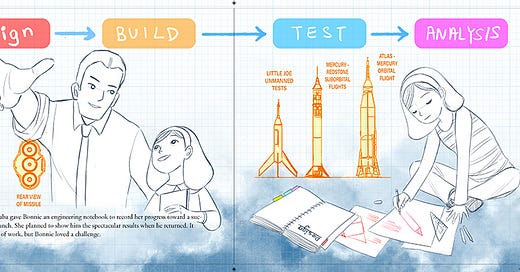



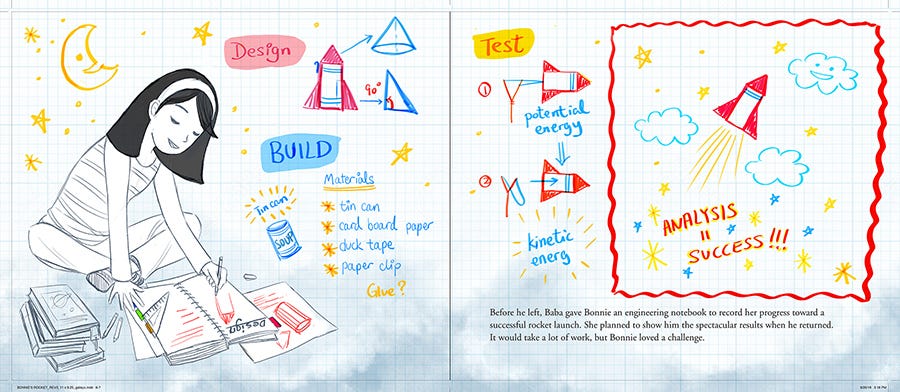
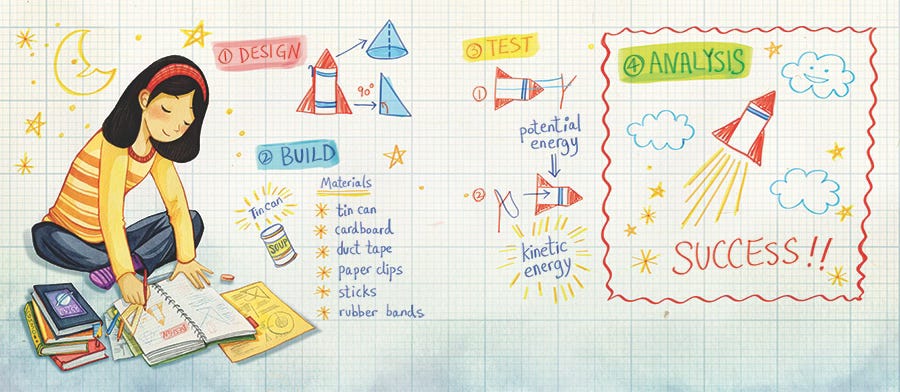
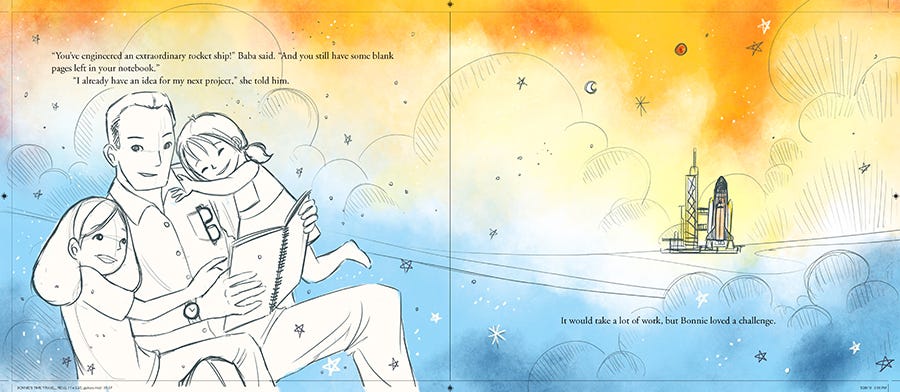
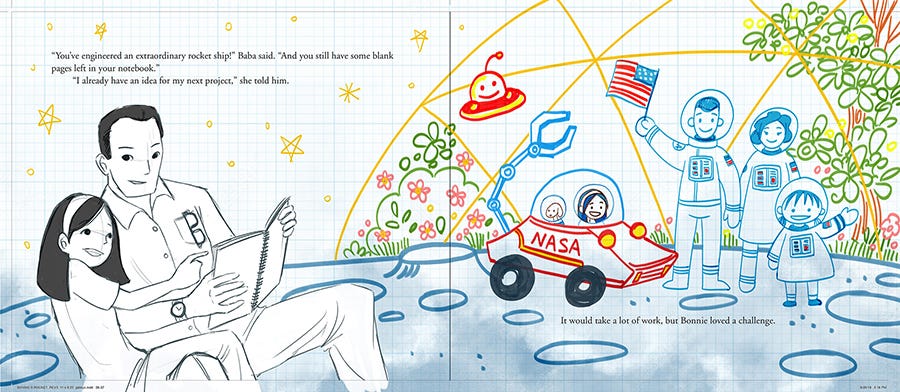
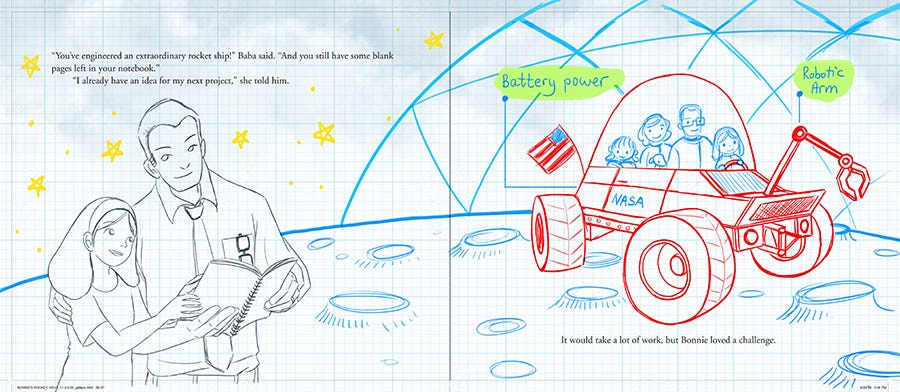
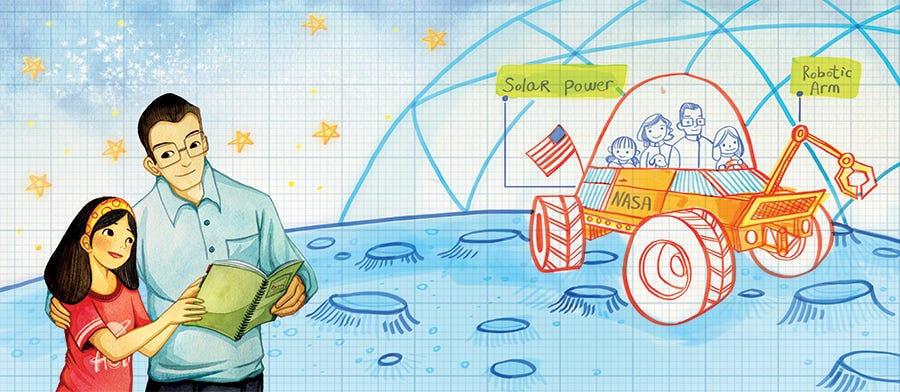

I love Bonnie’s Rocket! it is such a good book